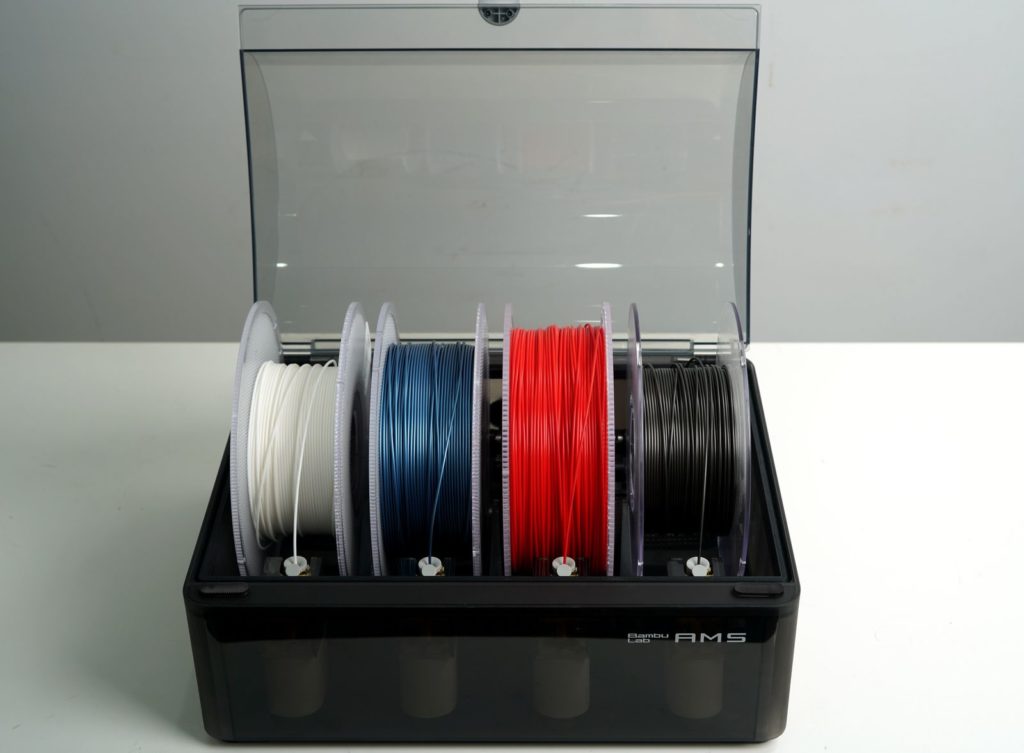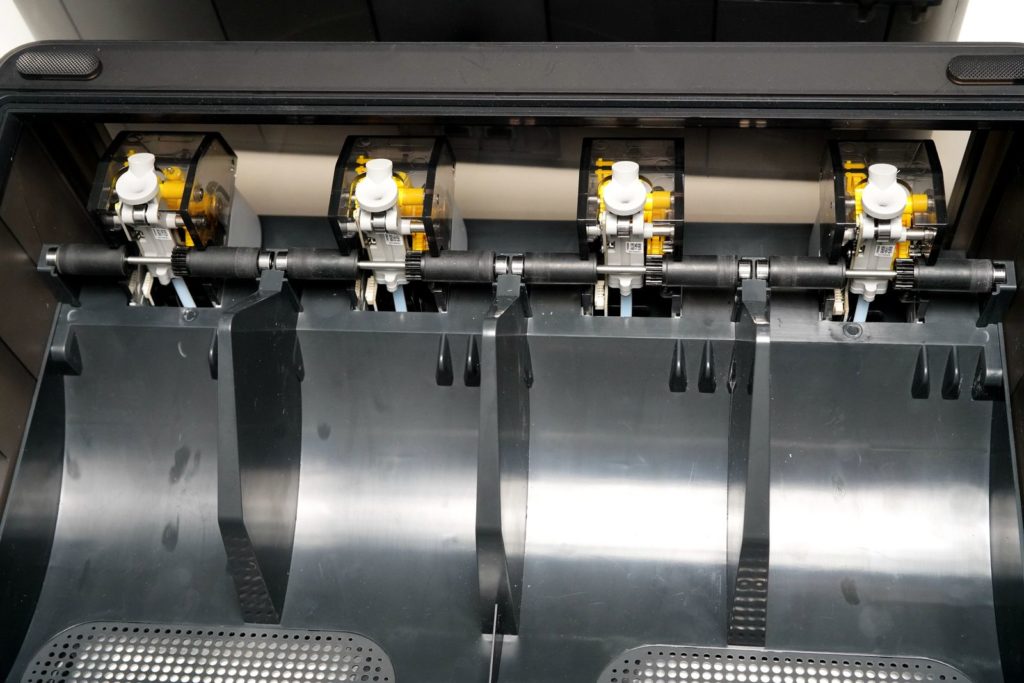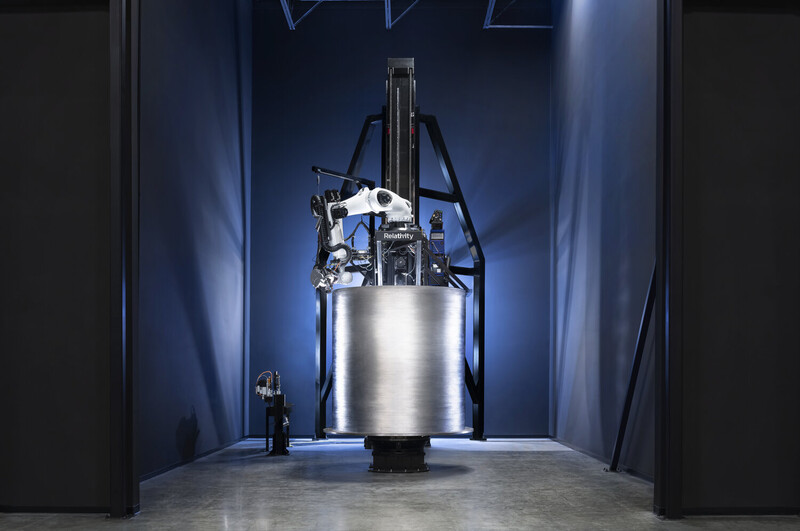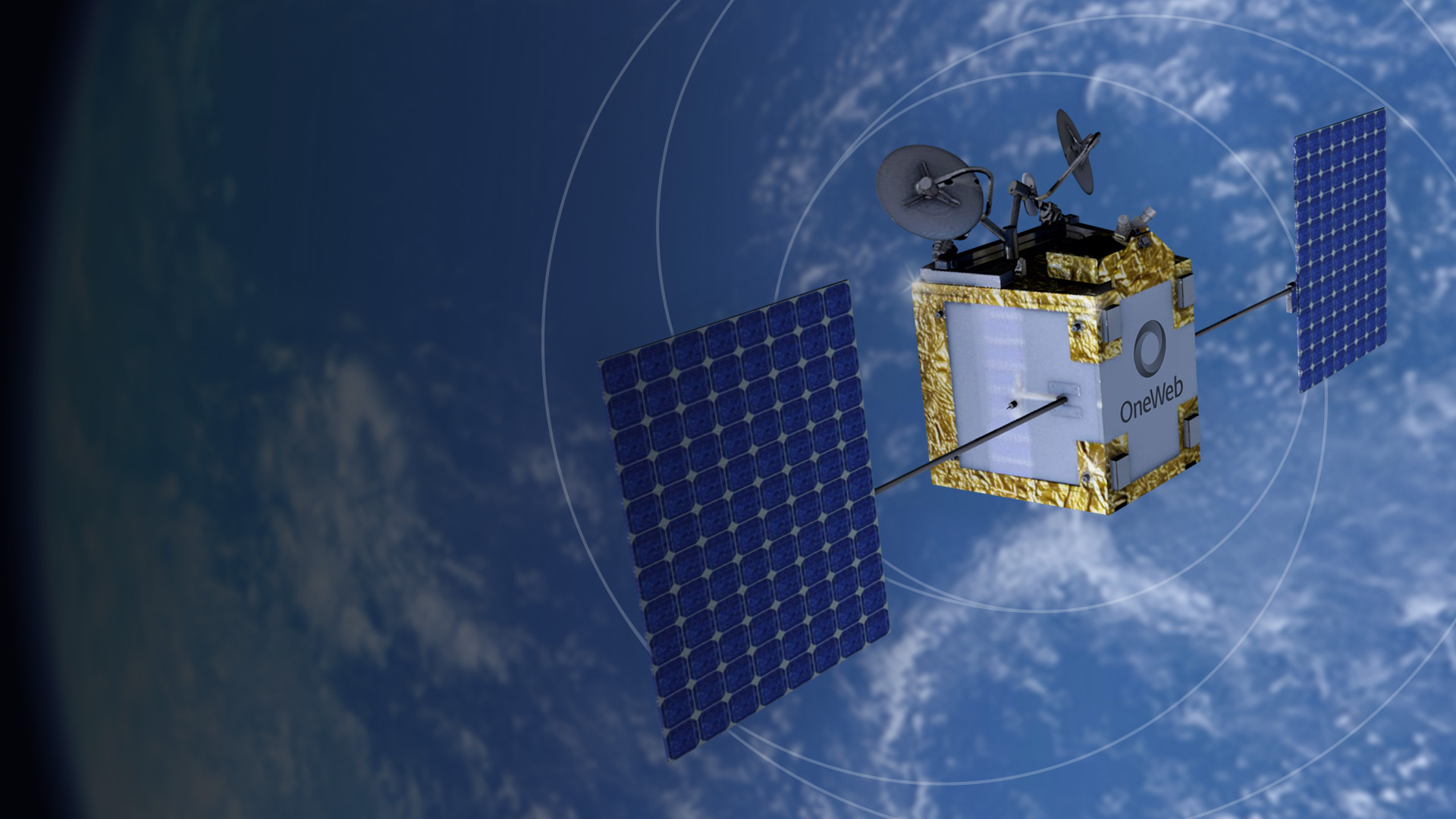3DPrint.com | The Voice of 3D Printing / Additive Manufacturing |
- Roboze Announces PRO Series of 3D Printers for PEKK and CF
- AMT Seeks to Automate the 3D Printing Ecosystem
- The Importance of the Bambu Lab X1 3D Printer
- OneWeb Satellites to Launch on Relativity Space’s 3D Printed Rocket in $1.2B Contract
| Roboze Announces PRO Series of 3D Printers for PEKK and CF Posted: 06 Jul 2022 06:30 AM PDT Roboze, manufacturer of end-to-end additive manufacturing (AM) platforms, has announced the release of its latest machines, the One PRO and Plus PRO. Roboze made the announcement at this year's AM Forum in Berlin.  Founded in Italy, Roboze also has an American headquarters, in Houston. The company's high temperature extrusion printers are optimized for working with polymers such as PEEK, which allows users to quickly produce plastic components with the strength of metals, but at much lighter weights. 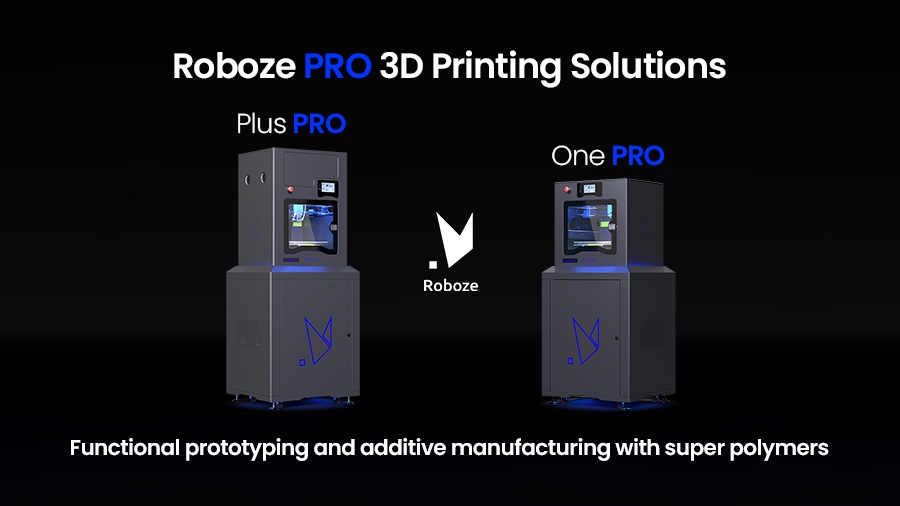
Along with the new printers, Roboze also announced the release of two new materials: Roboze PEKK (polyetherketonketone), and ToolingX CF (carbon fiber). As Roboze points out in the press release, these materials are already widely-used in the industry. The notable aspect is that, with the release of the PRO Series, the company has given its customers the ability to use PEKK and CF materials on Roboze platforms.  Both materials are ideal for meeting the industrial requirements of the major sectors Roboze provides equipment for, especially aerospace and oil and gas. More broadly, both the materials and the platforms are suited for any sector making metal components for mass industrial processes, which obviously covers a lot of markets. For instance, Roboze provided the example of one customer who used the Plus PRO and ToolingX CF material to replace aluminum in the manufacture of molds for paper pulp products. Among other advantages, this yielded the customer a cost savings of over 60 percent. The other major upgrade to the new hardware is its improved integration with Roboze's Prometheus software, by comparison with previous Roboze machinery. Along with a more reliable printing process, this could allow customers to cut print times by as much as half. Roboze's focus on the entire picture puts it in a perfect position to continue growing with the AM sector, as a whole. The company's comprehensive outlook extends not just to the production process, but to the total supply chain. Moreover, its Houston headquarters give it a real asset in its ability to benefit from rising energy costs, which is leading to increasing activity in the oil and gas sector. The post Roboze Announces PRO Series of 3D Printers for PEKK and CF appeared first on 3DPrint.com | The Voice of 3D Printing / Additive Manufacturing. |
| AMT Seeks to Automate the 3D Printing Ecosystem Posted: 06 Jul 2022 06:00 AM PDT It used to be considered 3D printing's "dirty secret." Now, however, post-processing isn't just a well-known aspect of the industry, but it is a thriving subsegment in itself. Just read SmarTech's report, "Automation, Additive Manufacturing and the Factory of the Future," to get an understanding of how the technology is key to the "lights-out" nature of robotic 3D printing plants. At the present, there are only really a handful of firms in the sector and, among them, AMT is a standout. This is in part due to the high-profile customers that have adopted AMT's solutions, as well as the fact that it seems to be the only post-processing company focused on tackling the whole segment and not just finishing solutions for this or that additive manufacturing (AM) technology. To learn more about this crucial segment and AMT's role within it, we spoke to CEO Joseph Crabtree. Automating the 3D Printing WorkflowAMT's bread and butter is currently vapor smoothing and depowdering equipment for polymer 3D printing technologies. Its chemical vapor process can be seal otherwise porous parts made with material extrusion or powder bed fusion techniques, giving them a vibrant, injection molding-style finish. Depowdering is specifically for powder bed fusion and uses shot blasting to ensure that parts are free of material particles before further processing. In addition to actual finishing of 3D printed parts, there are other aspects of the 3D printing workflow that are in the process of being automated. In fact, almost a decade ago, AM firms like Concept Laser and Additive Industries were promising robotic systems capable of conveying powder and finished parts around the factory floor. Years later, companies like AMT are actually working to deliver such solutions. Collaborating with the University of Nottingham and through its own internal research, the firm is working to enable robots to identify, pick-and-place, and transport parts. While the image of machines automatically moving components throughout a facility may be what sparks the imagination most, it's the software that is the more complex task.
To accomplish this task, the company is working with Oechsler, a German injection molding company with over 150 years in the business. Together with HP, the partners will work to fully automate the production to finishing workflow. Slated to be completed over the course of a year-and-a-half, the project will see a cell for automatically post-processing parts from 10 HP Multi Jet Fusion printers at once.
The challenge is integrating software, hardware, machine learning, vision systems, and 3D printer into a single cell. This means digital connecting and interfacing with HP machines, removing part automatically, and processing them. Because MJF printers weren't designed for this sort of workflow initially, it means modifying the equipment.
Crabtree believes that the first production line will be delivered in early 2023. When it is, it will be used for high-end, visible parts for automotive, medical, furniture-making, and other applications. Really, it signals a new era in AM.
A Solutions ProviderOut of all the few companies involved in post-processing, AMT has the unique strategy of working toward complete solutions. That is, it is developing solutions for a variety of polymer additive processes, with metal in the works. The reason behind this is simple enough: new 3D printing users don't necessarily understand the industry. That is, new customers may see the additive space as being very complicated, unsure of what technologies or materials are best suited for a given application.
Rather than leave a manufacturer to figure out what to do for themselves, AMT provides a tailored solution. "It’s not just, here’s a machine that smooths parts, or here’s a machine that cleans parts. It’s a solution that’s tailored to your exact needs. And those needs may be different depending on if you’re producing a running shoe, a widget for medical applications, or an automotive part. And I think that’s the trick the industry as a whole is missing," Crabtree said.
Market ConsolidationGiven the merger and acquisition activity that briefly flourished in 2021, as well as the increasing size of the companies entering the AM industry, we should expect further consolidation in the future. That is, if the overall market conditions improve, perhaps in the next 18-24 months. When that activity does pick up, Crabtree agreed that we will see more consolidation. In order to offer post-processing equipment or one-stop AM solutions, some machine manufacturers like HP, 3D Systems, or Stratasys, may consider the acquisition route. However, the post-processing space is still underdeveloped, so a potential purchaser will probably want to wait for the existing businesses to grow the space sufficiently before swooping in. At the moment, Stratasys has chosen DyeMansion for its selective absorption fusion technology, while 3D Systems and HP work more closely with AMT and Carbon collaborates with PostProcess Technologies. Could we see mergers take place between these firms? Another option could be for a large conglomerate to jump into the industry and acquire both printer manufacturers and post-processing companies to form a complete AM division.
The Next StageThe growth that will happen on AMT's part will not only be greater automation, but also a broader product portfolio. This includes smoothing of metal parts. The startup has performed fundamental research in the space and has been granted a number of patents for post-processing of metal 3D printed parts. In fact, it has already begun selling systems for cleaning metal parts. An official metal post-processing line, however, won't make it to market for another 18 to 24 months. Once this happens, this will make AMT the only business that manufactures both metal and polymer post-processing solutions. Surely, other firms in the space are racing to catch up. However, AMT is already much farther along and whether or not the competition can actually do so without consolidation remains to be seen. The post AMT Seeks to Automate the 3D Printing Ecosystem appeared first on 3DPrint.com | The Voice of 3D Printing / Additive Manufacturing. |
| The Importance of the Bambu Lab X1 3D Printer Posted: 06 Jul 2022 05:30 AM PDT I was incredulous when I first saw the Bambu Lab X1 3D printer. A printer with a core XY architecture, it has a material enclosure for four spools of filament. Bambu claims that it can perform material switching, including better support materials and short carbon fiber reinforced polyamide. It is said to have an all-metal hot end capable of reaching 300°C all-metal hot end, a bed capable of 120°C, and a chamber up to 60°C, with 40W ceramic heaters. The company further said that the X1 has AI-powered LIDAR for calibration, as well as a camera within the build chamber, a belt tension sensor, spaghetti detection, and AI first layer detection. The print head can accelerate at 20 meters per second and move at 500 mm per second. There was also something called high bandwidth flow control. The quiet X1 additionally has native 3MF support. This isn’t a 3D printer. It’s a dream-come-true. What’s more, on Kickstarter the printer was selling for $1,500. What is happening? The Bambu X1 3D Printer: A Kickstarter CoupCurrently, the Bambu X1 has raised €6,670,950 from 5,560 backers on Kickstarter. This makes it one of the most successful hardware Kickstarters of all time. This would be the biggest 3D printer on the crowdfunding site after the Ankermake and Snapmaker. In addition to running an excellent crowdfunding campaign, the company was also doing great in outreach. All of a sudden, everyone had an opinion on the Bambu Labs X1. My personal take is that the printer is feature rich and I love many of these features. I wonder about vibration across the chassis and its ability to print larger objects. The “Active Vibration Compensation” system would seem to be integral to its success and difficult to copy. The company is made up of a number of team members who have worked on gimbals, vibration, distortion, and computational physics and modeling. Bambu has an ideal team to build an active method for reducing vibration across the chassis and within the chassis itself. This could be a true USP versus other players in the industry. If Bambu eventually manages to iron out all of the inevitable initial teething issues, the X1 seems to be a very formidable machine at a low price. It’s not a knock out blow, but it is a body blow to a lot of mid-market players. It will take some time, however, for the firm to tame all of the complexities of this beast and get it to work properly, which will give everyone else time to compete with them. From Hype to Hype HangoverFrom high hype and a great deal of enthusiasm, we are now seeing a bit of a come down for the product. On the one hand, some of the components seem to not be able to withstand the heat required to print polyamide even in initial print runs. This is very worrying because this is simply spec sheet stuff, in which we’d expect any company worth its salt to know the heat deflection temperatures of the components that will be in the heated chamber. That is fixable, but very sloppy. Bambu isn’t the first company that’s done this, but its not a good sign.
We’ve also heard that Bambu’s slicing software uses PrusaSlicer without proper attribution or sharing its code with the public.This is a sign of disrespect to the community as a whole and to open source software generally. It is also not good business practice. The company quickly responded, not with contrition but with a plan. Efficiency is good, but being humble in the face of challenges in mistakes is often a better portend of long-term business success.
There are also some issues that are very worrying generally.
However, given that this is essentially a pre-release version of the printer, a lot of the technical issues can be ironed out. The company also has a bank of 200 3D printers for testing, which is lovely and should make the printer much better. Bambu Lab has also disclosed that they’ve made at least seven versions of the 3D printer so far. In an exhaustive video below, Uncle Jessy says he’s sending back his very fast 3D printer. In the midst of our waves of hype to sorrow, let’s take a step back and look at why the Bambu Labs X1 is important. I am, by no means, the first person to have opined this, but I think that now is a good moment for introspection. Uncle Jessy rightfully describes the product as “a kick in the pants” for the market and has referred to as a game changer by many people. I echo those sentiments. The jury is still out on if this printer will deliver on its many promises. It could very well fail miserably or dominate the 3D printing market. We will have to wait and see which it will be. But, the Bambu Lab X1 will change the industry. Let’s take a look at how. The X1 Changes the 3D Printing MarketThere are seven major ways that the Bambu Lab printer is changing 3D printing: being different, new feature set, market-based innovation, software forward, excellence across the board, team and funding. These seven major ways that Bambu will change the market are also simultaneously seven things that the company seemed to have gotten right so far. Being DifferentA lot of individuals have pointed this out, but the Bambu Labs machine in-and-of-itself is market changing. It could fail miserably and still be very impactful. The desktop material extrusion market has become quite stratified with high-volume Chinese producers like Anet, Creality, Artillery, and others selling 3D printers for $150 to $400. These were slowly getting better, with more features. Prusa Research continued to manufacture well-made fused filament fabrication systems for $300 to $1000, moving toward bigger machines as well. Above $1,500, there was a real shakedown in the industry with firms getting crushed. Over this price point, Ultimaker was making $5,000 printers and even better in-office machines for $10,000, where it may or may not bump into Stratasys and its higher-end systems. From $150 to $3,000 most printers had the same architecture and software, differing mostly in terms of component sourcing and price. The Bambu changed this. It demonstrated that a feature-rich printer with new ideas could make an impact. Everyone is now going back to the drawing board to dream bigger and look at newer features and functionalities to improve their machines. In this sense, the printer has really shaken up the market. Feature Set
Most often, businesses were claiming to have developed the only reliable open source printer. This was frequently wholly untrue all of the time and sometimes untrue for just some of the time. Features included new displays or filament end detectors. Bambu has gone much further than this and engineered many more features. Some, like the Automatic Material System (AMS) mean that it can enclose four spools and keep them well-tensioned all of the time using a motor to pull back filament and ten sensors to monitor the process. LIDAR-based calibration and first layer analysis is also new and could be advantageous. AI-based features may very well prove their worth—or they may be mere marketing claims. On-board camera and spaghetti detection should have frankly have been included on all systems a long time ago. The plethora of features is notable, as is the fact that the company has been working on some of them for over two years. This will inspire a lot of companies to come up with super silly names for stupid features that will not work. At the same time, it may set in motion a desire to really look at ameliorating the daily usage problems of a desktop 3D printer.
Market-Based InnovationRather than produce another clone to die in the clone wars, Bambu is clearly trying to eliminate a lot of user issues and problems. There must be a great deal of deep 3D printer usage experience in the firm because a lot of the developments are exactly related to the problems that affect users most. The company has solutions for many issues, some incredibly over-engineered and some elegant. However, they did listen to our problems. They didn’t just make a Prusa copy with a color screen. This will lead to many more companies, hopefully, that listen to users and deal with their complaints. Software-ForwardIt is not really surprising that, at its core, Bambu’s slicing software belongs to someone else. There has been little fundamental innovation in slicing lately. It looks like the firm uses PrusaSlicer without crediting it or giving back to the community. This is a travesty and should be dealt with in a polite and efficient way by the firm. With app notifications, an iPhone and Android app, and software-driven features they have made a much more software-forward printer. The Bambu leans on software for a lot of its features and experience. So far, 3D printer teams have been made up of a mechanical engineer lead, with innovation resting on the hardware side and software as an afterthought. Formlabs and Markforged are two examples of companies that have beautiful, well-engineered software that really makes the overall experience seamless. Hopefully, Bambu will inspire people to ship better programs that work seamlessly with 3D printers. Excellence Across the BoardBambu was great at their Kickstarter and general PR, but also with engaging 3D printing influencers. Indeed, its marketing relies very heavily on influencers. It was omnipresent on YouTube and everyone sang its praises for a while. The firm seems to be capable of very solid engineering and cataloging the problems that users have. There must be some stellar project management going on in getting this complex system to market, as well. At the same time, the team also raised a lot of capital before going to Kickstarter. So, to launch a printer now, you have to be good at many things and excel at marketing to capture attention. Boxes with bad websites will hopefully be replaced by people who communicate better and are striving for excellence across the board. Team
Bambu’s team consists of ex-DJI engineers. DJI itself came out of nowhere to completely dominate the consumer drone segment. Your local electronics store predominantly stocks DJI drones, wherever you are on the globe. Look around and you’ll see that almost every other electronics segment is more competitive and fragmented. DJI´s absolute and total dominance of the consumer drone market is an incredible achievement. Drones are also finicky and have to be protected from manhandling and crashes. It’s almost an ideal background to have made complex consumer unmanned aerial vehicles that balanced software, hardware, engines, and more at scale. It’s hard to think of other segments that have the same mutual dependence of interconnected yet disparate systems that 3D printing does. Also, the scale of the business and how globalized DJI has become would really help this team. Generally I think that this team is an incredible advantage to the firm and will lead to more people looking for stellar engineers as founders. Dr. Ye Tao´s experience as CEO is augmented by project management on the Mavic Pro. Additionally, as former Director of Propulsion Systems and Director of the Consumer at DJI, make him very well placed to oversee the development of a 3D printer. FundingRather than having to risk it all on Kickstarter, this firm previously had some heavy investment. It would seem that it has heavy venture capital backers. This is very reminiscent of Formlabs, which was made up of a well-funded team that used Kickstarter to catapult itself towards users and growth, rather than funding. In this case, Kickstarter worked like a charm, but the company was practically manufacturing-ready with, it seems, all major molds and components already made. Perhaps the company is funded by SIIC, a very well-connected firm. However, there may be others as well. This means that the business should have significantly more heft to scale operations internationally and increase the capabilities of the printer. ConclusionWhether the initial success of the Bambu is far from certain, the company seems formidable and they’ve made a printer with a lot of features and capabilities. The firm is very ambitious, seems to be well-funded and is on a path to disrupt the 3D printing industry. Bambu Labs has changed our industry and is a serious potential competitor over time to any and all 3D printing businesses. The post The Importance of the Bambu Lab X1 3D Printer appeared first on 3DPrint.com | The Voice of 3D Printing / Additive Manufacturing. |
| OneWeb Satellites to Launch on Relativity Space’s 3D Printed Rocket in $1.2B Contract Posted: 06 Jul 2022 05:00 AM PDT Disruptive rocket manufacturer Relativity Space has signed a multi-year agreement with broadband constellation company OneWeb to launch its low Earth orbit (LEO) satellites starting in 2025. As part of the deal, Relativity will launch OneWeb's second generation (Gen 2) satellite network on Terran R, a fully reusable, entirely 3D printed rocket. With the addition of this multi-launch agreement with OneWeb, Relativity says it has a total of five signed customers for Terran R, including multiple launches, totaling more than $1.2 billion in the backlog. That is a significant number of deals considering the company has yet to launch its rockets. Terran R will launch OneWeb missions from Launch Complex 16, Relativity's site at Cape Canaveral Space Force Station, where the first entirely 3D printed rocket, Terran 1, is also set for its first orbital launch this year. As a medium-heavy lift, fully reusable launch vehicle made for growing satellite constellation launch demand and eventually multi-planetary transport, Terran R provides government and commercial customers affordable access to space in LEO and beyond. As a two-stage, 216-foot-tall rocket with a 16-foot diameter, and a five-meter payload fairing, Terran R will be entirely reusable and capable of launching 44,000 pounds (20,000kg) to LEO starting in 2024 at the company's launch site in Cape Canaveral. Created in Relativity's Factory of the Future by the same printers and team as Terran 1, Terran R has unique aeronautical features and complex structures and can launch 20 times more payload than Terran 1. While the company is keeping momentum towards the demo launch of Terran 1 during the Summer of 2022, it is also rapidly iterating on Terran R and its Aeon R engines with powder bed fusion technology. Terran R will be outfitted with seven 3D printed Aeon R rocket engines capable of 302,000 lb. thrust each, while its upper stage houses one Aeon 1 Vac engine. Terran R also represents a giant leap toward Relativity's mission to build humanity's multi-planetary future, eventually offering customers a point-to-point space freighter capable of missions between Earth, Moon, and Mars. 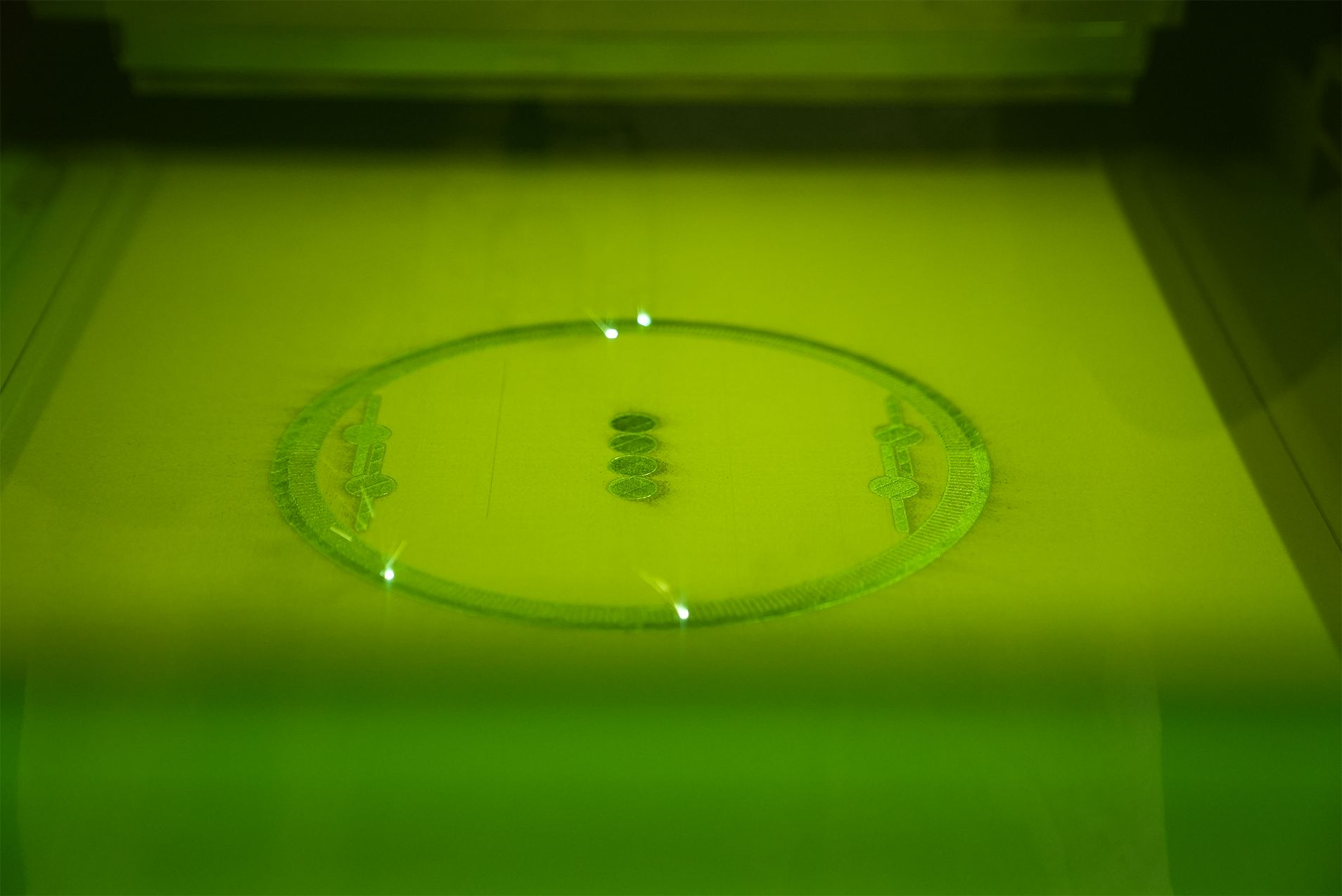 Iterating on Terran R and its Aeon R engines, with powder bed fusion technology. Image courtesy of Relativity Space via LinkedIn. Using Relativity's groundbreaking proprietary 3D printing technology platform called Stargate, the company can build its rocket from raw material to launch-ready in less than 60 days and has 100 times fewer parts than traditional rockets, which are comprised of more than 100,000 parts, resulting in expensive, complex spacecraft that take 18 months or more to build and launch. Instead, Relativity has created a unique aerospace platform to integrate machine learning, software, and robotics with metal 3D printing technology to optimize every aspect of the rocket manufacturing process, disrupting 60 years of aerospace technology. If the demo test is successful, the space industry could change a lot in the next decade; that means no more conventional fixed tooling, complex supply chains, and extensive human labor. With the signing of the latest launch services agreement (LSA), OneWeb becomes the fifth customer for the California rocket maker. Although the terms of the deal were not disclosed, OneWeb Chief Technology Officer (CTO), Massimiliano Ladovaz, said Relativity will "add new capacity to our launch programme well into the future." Built in the UK, OneWeb's satellites will increase the company's foothold in LEO, building upon its initial constellation of over 600 satellites for high-speed, low-latency global connectivity. The satellite internet company launched the first members of its first satellite constellation in early 2019 and currently has 428 satellites (66 percent of the fleet.), orbiting approximately 745 miles (1200 kilometers) above Earth. Demand for OneWeb's broadband connectivity services has continued to grow across telecommunications providers, aviation and maritime markets, and governments worldwide. The company had been launching its satellites aboard Russian-built Soyuz rockets. However, that partnership dissolved in the wake of the Ukraine invasion, leaving OneWeb without a launch provider. Then in March 2022, the company signed an agreement with SpaceX (a competing satellite manufacturer) to send its remaining first-generation satellites – over 200 satellites – to orbit. With this new customer, Relativity is expanding even further. Tripling in size since 2020, the rocket maker now employs over 800 people across its Long Beach, Vandenberg, Seattle, Washington D.C., Stennis, and Cape Canaveral locations and has begun its move to its new one-million-square-foot headquarters, which has a capacity for more than 2,000 employees, a metallurgical laboratory, powder bed fusion printers, a mission control center, as well as dozens of the company's proprietary Stargate 3D printers. Relativity recently deployed the fourth generation of Stargate, improving its prior generation's print speed by ten times. Located in the company's new headquarters, these new, fourth-generation Stargate printers could allow Relativity to take its production to new heights. The company stated that its printers with in-process monitoring can now analyze the prints in real-time, detecting any quality issues and using predictive capabilities to print fuselages to aerospace dimensional tolerances. The post OneWeb Satellites to Launch on Relativity Space's 3D Printed Rocket in $1.2B Contract appeared first on 3DPrint.com | The Voice of 3D Printing / Additive Manufacturing. |
| You are subscribed to email updates from 3DPrint.com | The Voice of 3D Printing / Additive Manufacturing. To stop receiving these emails, you may unsubscribe now. | Email delivery powered by Google |
| Google, 1600 Amphitheatre Parkway, Mountain View, CA 94043, United States | |
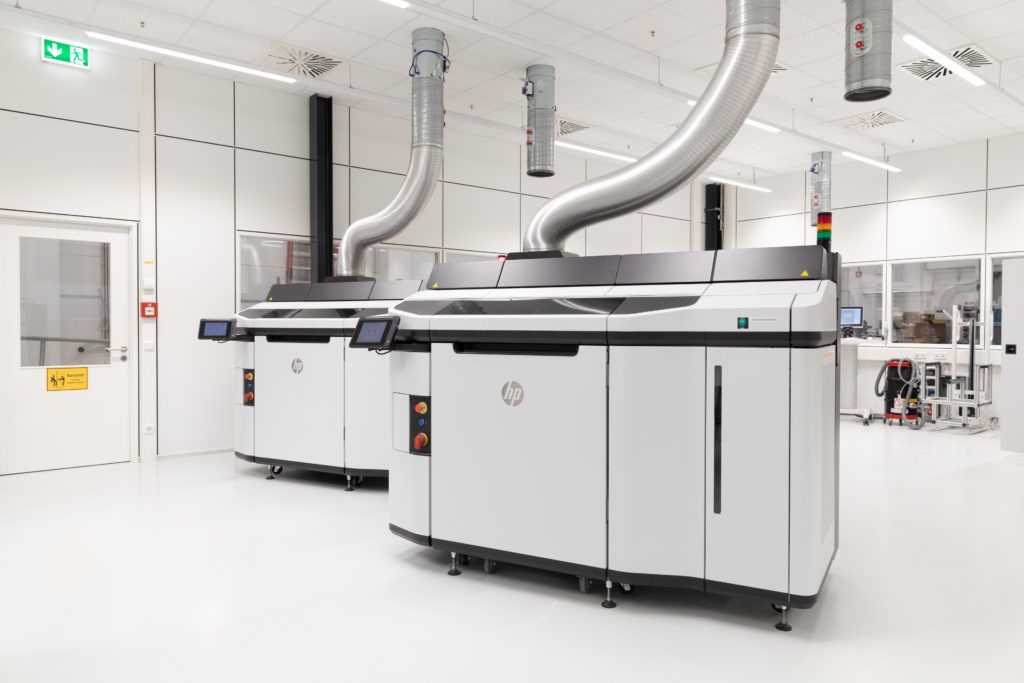
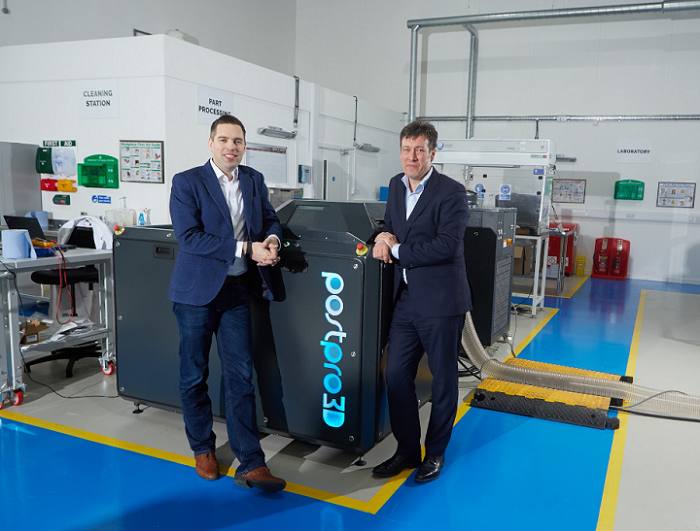
 I guess this explains why we started getting BambuSlicer entries in our DB shortly after releasing PrusaSlicer 2.4.0
I guess this explains why we started getting BambuSlicer entries in our DB shortly after releasing PrusaSlicer 2.4.0  We introduced opt-in to anonymously send us system info with this version. The Bambu reskin looks nice though
We introduced opt-in to anonymously send us system info with this version. The Bambu reskin looks nice though  What are your thoughts on this? 1/2
What are your thoughts on this? 1/2 